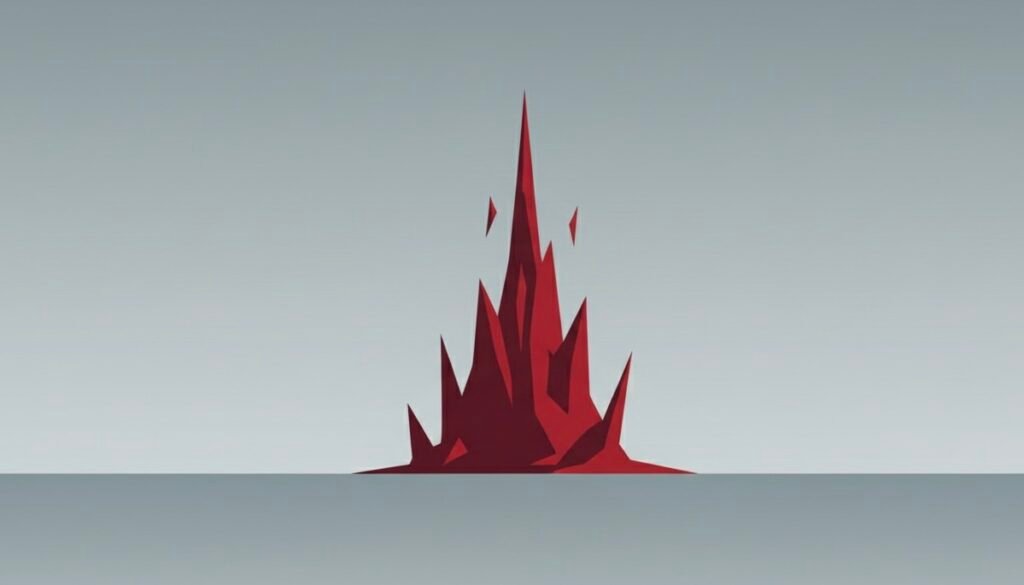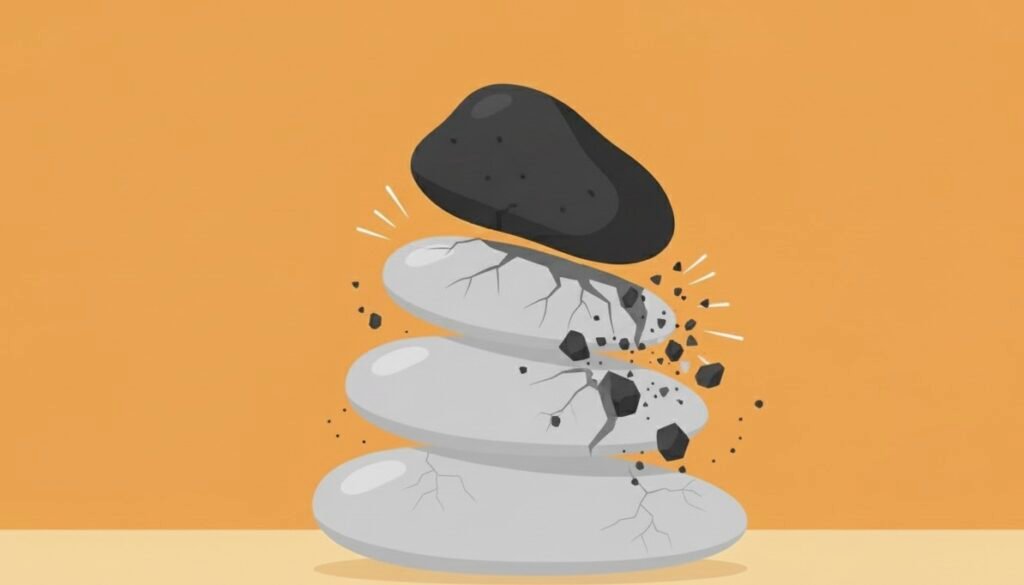Living with an ongoing condition means carrying a weight that rarely lifts. Most days, the ache hovers at a baseline; persistent, but something you learn to work around. Then, suddenly and apparently without reason, the intensity surges.
Many people facing this ask the same question: what to do when chronic pain is unbearable? The answer isn’t about a single cure or trick. It’s about understanding the difference between baseline ache and flare-ups, learning why they happen and creating a practical plan that steadies you until the suffering eases.
This guide explains what a chronic pain flare-up is, why it happens, what the triggers can be and how to handle it hour by hour. It also covers prevention strategies and the emotional toll the spikes in pain bring, so that next time, you feel less powerless and more prepared.
Inside my latest flare
Now, I am writing during a flare-up. It started one week ago. I believe it snapped because a few stressful events lined up. Nothing dramatic, but enough to make me feel unsafe and steal my sleep. Two triggers: I started driving again after a few years of being just a copilot, and I began thinking about a career change.
I arrived home, parked the car and fell into the rabbit hole that night. At first, my head was full of worry. Then my stomach filled with a sense of fear. After that, my muscles began pulsating, and I felt burning under the skin. My neck became very rigid, and the pain in my lower back deepened in its usual spot. On my right side – the one that is usually more sensitive – I have a patch that cannot even bear a towel or the softest touch; and during the flare it hurt even when I was dressing up. I didn’t sleep much, and the next day the pain was already hard to face. I applied some techniques I usually use when the surge announces its loud presence.
What worked best were long walks outside, doing something I liked and motivated me, and reading before going to bed. So, in one word, it was: action. Not fighting with my pain, not collapsing under its weight, but accepting it and moving on with what I enjoyed. And I’m not using the word ‘accepting’ lightly; I know the effort it involves, the resistance it takes and how much practice it needs.
Now I am better and can feel how the pain loosened its grip. The most reassuring part of a flare is its temporary nature. They have a beginning, and they also have an end.
It depends on us to notice why it started – events right before the spike – and how we can address them to reduce the fear. For example, let’s say we feel unsafe because the neighbor has a pit bull. Is the dog living in our space? Can it enter our home? Does it wear a muzzle when we meet the owner in the hallway or outside? By asking these questions, we challenge the fear and see what is reasonable and what is not. In a few words: look for proof of your anxiety. This way you know if it is an actual threat or just apprehension at work. With this, you can put your mind and body back in safety.
I started doing this practice of checking triggers and their “truth” once the pain calmed a little. At the very beginnings, I was too absorbed by it.
To this, you can add breathwork, gentle movement and avoiding screens. It sounds like a lot; I know. It is, but once you find what helps you, it becomes a matter of consistency.
Looking back, at first I did not know what flares were. I often experienced terrible spikes in pain, but I didn’t know what they were, why they happened or how to reduce them. You cannot fight an enemy you cannot see – it made sense. Once I “saw” it and named it, the answers came more easily. In those early days, my first reaction was to take more pills – more painkillers – but now I know that relying only on medication is not the answer. It can ease certain moments, yet the real progress for me has come from tools that calm the nervous system.
I am introducing this to you in the best way I can, and I truly hope it will help on your bad days.

What Is a Chronic Pain Flare-Up?
Daily discomfort is the background hum: constant, sometimes quieter, sometimes louder, but relatively stable. A flare-up is different: a sudden escalation that rises far above the baseline level. It can last hours or days, leaving you exhausted and questioning your own resilience.
Recognizing this difference is essential, because the tools that help you cope with ongoing symptoms often aren’t enough in a surge. In those moments, you need a crisis plan designed for survival, pacing and nervous system calming.
Understanding that acute episodes are distinct from your “every day” symptoms helps you take the right next steps when you’re faced with what to do when chronic pain is unbearable.
What Does a Chronic Pain Flare-Up Feel Like?
A flare-up isn’t just more pain. It’s discomfort that consumes everything else. Your muscles may feel tighter, fatigue can crash over you, brain fog makes it hard to think, and even minor tasks feel monumental. If these symptoms are familiar, you might also want to read my guide about chronic pain fatigue and brain fog.
The emotional side is just as powerful. You might feel scared – “Is something wrong with me?” or frustrated – “Why now, when I was doing better?” This combination makes these episodes feel heavier than the physical sensations alone.
They may feel unpredictable, but over time many people notice patterns: spikes often appear at certain times of day, after stressful events or after pushing too hard physically.
Why Do Flare-Ups Happen?
Flare-ups are not signs of new damage. They are nervous system reactions. The brain and body of people living with chronic pain become sensitized: they misinterpret harmless signals as threats.
Here’s what happens:
- Sensitization: the nervous system becomes overactive, amplifying normal signals.
- Trigger stacking: small stressors – poor sleep, high stress, irregular meals or relying too much on caffeine – accumulate until pain rises sharply.
- Protective alarm: the episode is the body’s way of forcing rest, even when no injury is present.
This is why a surge should be seen as temporary, not as a loss of progress. In reality, the nervous system has crossed its limit. With the right response, the system settles and your baseline returns.
When chronic pain becomes too much, it does not mean you are broken. It means your nervous system needs reassurance and a return to safety. Understanding this makes a flare-up less frightening.
Common Triggers to Watch For
Flare-ups may seem unpredictable, but most develop from patterns of stress layered on top of baseline pain. At the core, the system reacts most strongly when it perceives a lack of safety.
Typical triggers include:
- Physical: overexertion, long periods without rest, sudden activity changes.
- Emotional: fear, frustration, ongoing worry about symptoms.
- Environmental: loud noise, bright lights, weather shifts, crowded spaces.
- Physiological: dehydration, irregular eating, overuse of stimulants, hormonal fluctuations.
One stressor alone may not cause a reaction, but combined factors can push the system into overload.
Recognizing these patterns is not about blame. It is about awareness. The more you identify your personal triggers, the earlier you can respond and restore a sense of safety, often preventing a severe episode.

A 24-Hour Flare-Up Plan
Guiding principle: During a flare, prioritize safety and calming. Do not do somatic tracking or exposure-style work until intensity settles.
Morning: Pause and Assess
- Name what is happening, set a simple plan for the day that lowers demands.
- Reduce inputs: quieter space, softer light, less screen time.
- Eat something easy, hydrate, limit caffeine.
- Slow breathing, comfortable pace, focus on longer exhales.
- Reassure yourself: temporary state, not a setback.
Daytime: Stabilize
- Use micro-rests on a timer; sit or lie in a comfortable position.
- Choose neutral, low-effort activities that feel safe, for example light reading or a familiar show.
- Comfort tools as tolerated: warmth, gentle pressure, a shower at a comfortable temperature.
- Sensory grounding: look around the room, name a few things you see or hear, feel your feet on the floor.
- Co-regulation if available: brief supportive contact with a trusted person or pet.
- Steady meals, steady fluids, keep sugar modest.
Evening: Wind Down for Sleep
- Start a wind-down routine early; keep stimulation low.
- Keep the bedroom cool and dark, reserve the bed for sleep and quiet rest.
- If you cannot sleep after a while, get up, do a low-arousal activity until drowsy, then return to bed.
- Gentle reassurance: the spike eases with rest and safety.
For most people, the intensity is higher at night. I’ve written more about why pain gets worse at night and what can help, in my article on sleep and chronic pain.
During a Flare: What to Avoid
- Somatic tracking, symptom monitoring exercises or exposure to feared sensations.
- Pushing through activity, new exercises, deep stretching or strong self-massage.
- Intense breathwork, pain research spirals, large decisions.
After the Spike Eases (when intensity is clearly lower)
- Reintroduce somatic tracking in short, calm doses only when you feel safe.
- Brief brain-retraining statements that frame symptoms as non-dangerous.
- Write any patterns you noticed so you can adjust pacing and supports.
This plan doesn’t erase pain, but it gives you structure and a sense of control – a practical, grounded answer for what to do when chronic pain is unbearable.
How to Prevent Flare-Ups
Prevention isn’t about eliminating every trigger. It’s about building resilience so the nervous system doesn’t react so strongly.
Effective strategies include:
- Somatic tracking: gently observing sensations without judgment teaches the brain they are safe. Instead of bracing or panicking, you watch the pain with curiosity, which lowers the alarm response over time.
- Brain retraining: repeatedly reframing pain as a false alarm reduces its power. This means reminding yourself that the sensation is uncomfortable but not dangerous, shifting the brain’s interpretation from threat to safety.
- Flexible pacing: balancing rest and activity to avoid push-and-crash cycles.
- Pattern awareness: noticing times of day, stress combinations or activities that commonly lead to spikes. By seeing these patterns, you can step in earlier with rest or calming tools before a full episode takes over.
For more ideas on calming your nervous system day to day, I’ve shared a full set of tools and practices here.
You will still have pain surges, but prevention makes them less frequent and less overwhelming. This is the foundation of learning how to handle chronic pain flare-ups with confidence.

Emotional Side of Flare-Ups
The hardest part of a flare-up is often not the physical pain but the emotional weight. The fear that it won’t end, the frustration that progress is lost, or shame for not “handling it better”, can all amplify the experience.
The shift comes when you treat these episodes as temporary states, not setbacks. That mental reframing calms the nervous system and keeps it from slipping into stress mode.
Practical steps:
- Acknowledge feelings – “I’m scared right now” – then redirect toward a kinder thought, like “this is temporary” or “I’ve gotten through this before.”
- Use grounding: focus on your breath, an object in the room or gentle movement.
- Talk to yourself kindly: “This will pass. I am safe.”
Each compassionate response is a form of brain retraining. Over time, it teaches your nervous system that pain is not danger, reducing both the worry and the intensity of future surges.
FAQs
How long do flare-ups last?
They can last from hours to days, depending on triggers and nervous system sensitivity.
Are flare-ups a sign my condition is worsening?
Not necessarily. Most flare-ups reflect temporary nervous system overload, not new damage.
When should I seek medical help?
If the pain changes suddenly in character, becomes extreme in new ways or pairs with alarming new symptoms, consult a professional.
What can I do immediately when chronic pain becomes too much?
Pause, reassure yourself it’s temporary, reduce stimulation and follow a structured plan to ease your system.
Note: This article is for educational purposes. It does not replace medical advice. Please consult a professional for guidance on your specific condition.
Knowing what to do when chronic pain is unbearable gives you back a sense of control and diminishes the power that it can have over you. I’ll be glad if you leave today with even one thing you can apply to ease your flares. Be kind to yourself and stay curious.
If you got this far,
Get Support in Your Inbox
Subscribe to the newsletter and let me help you turn confusion into clarity. The PDF I have prepared is a guide that will help you organise all the elements of your condition: symptoms, treatments and impact, so you can understand your pain behaviour. This is truly important for explaining it to healthcare professionals, loved ones and yourself.
“Clinical Clarity Workbook–A map for precise diagnosis“
Until next time,
Alina

